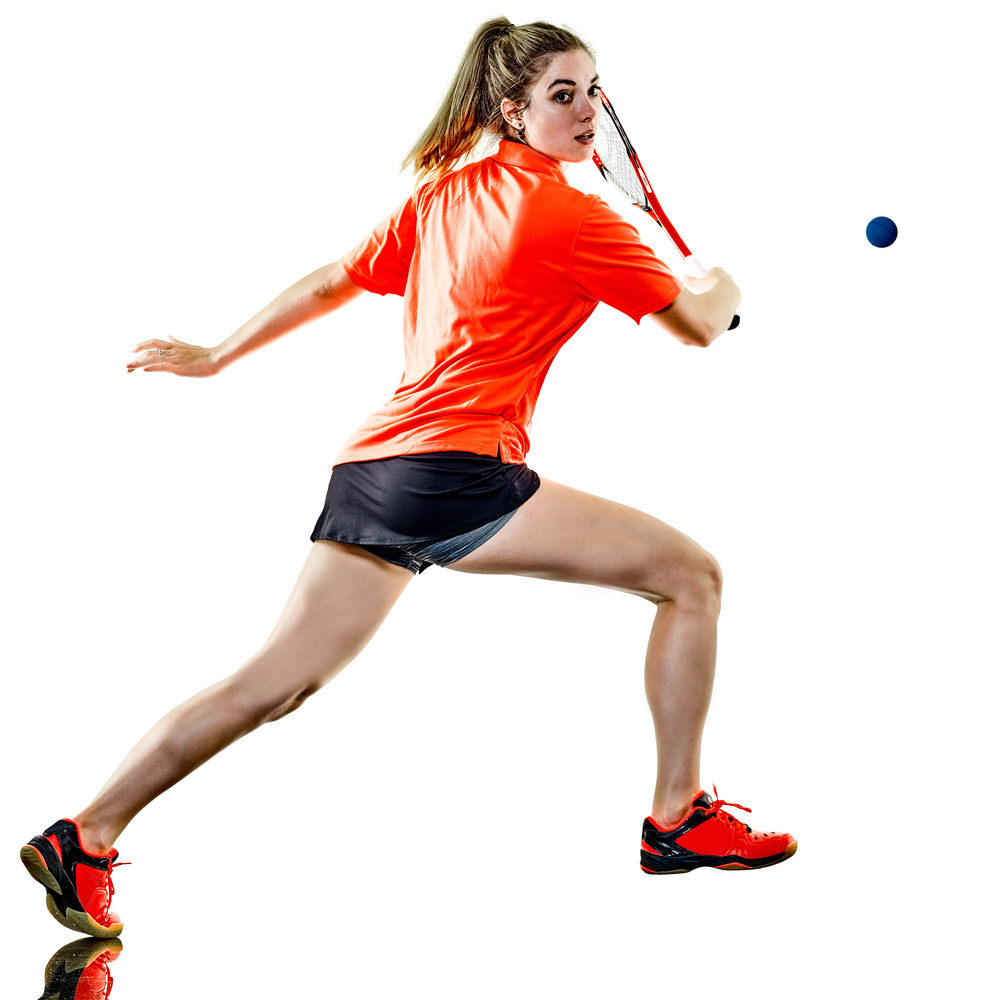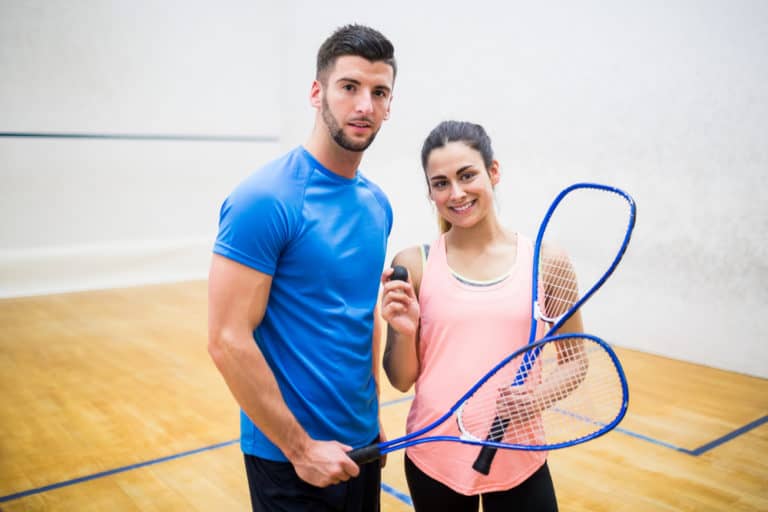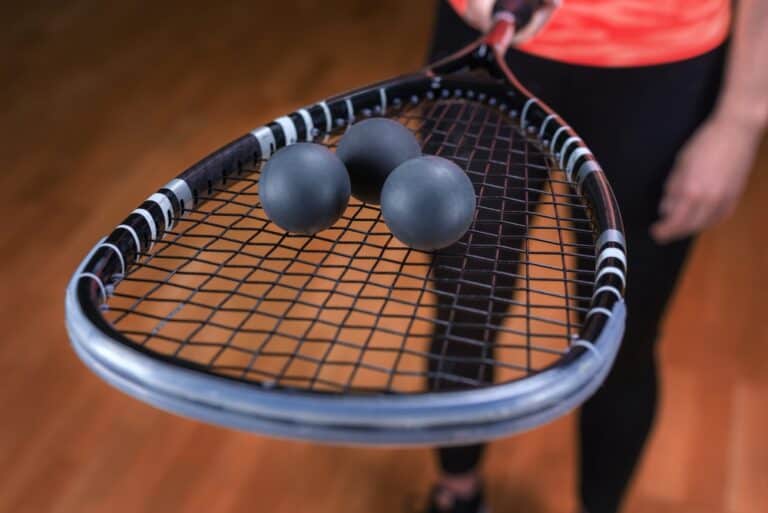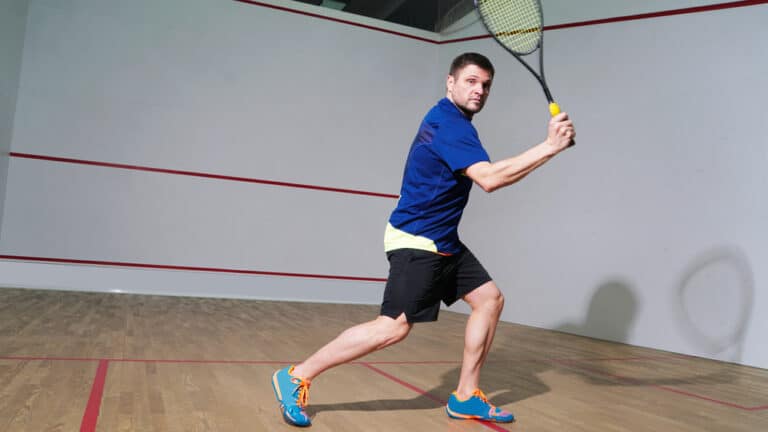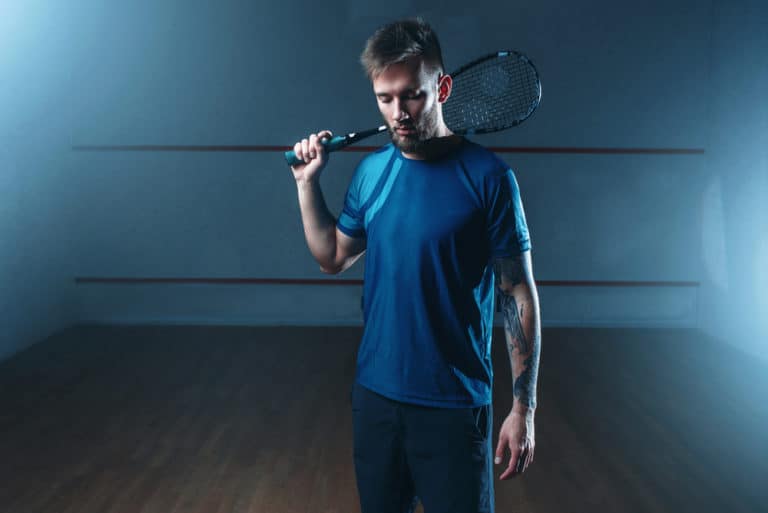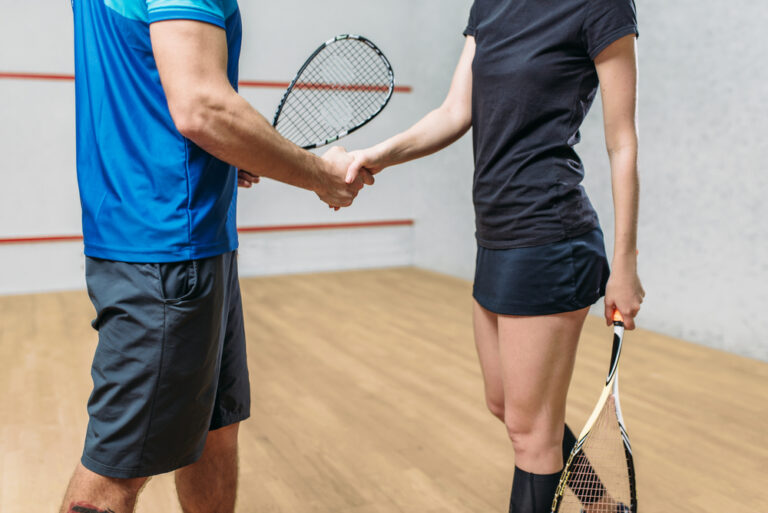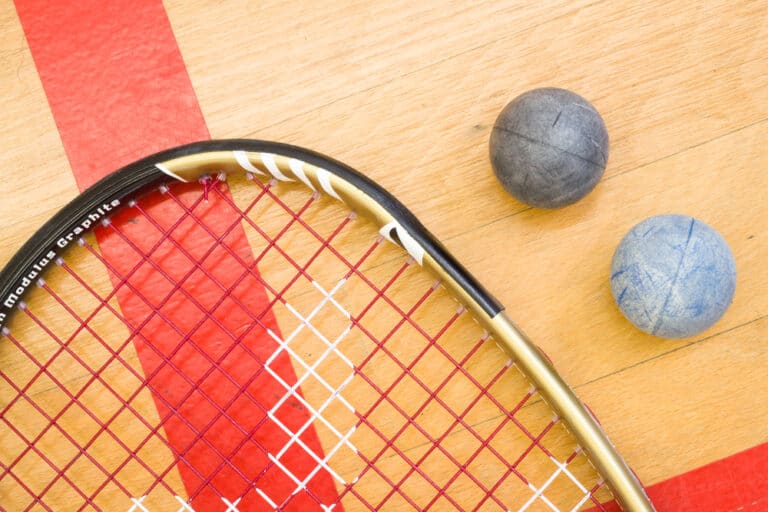How Many Players Can Play Squash?
Squash is a fast-paced racquet game played with a hollow soft rubber ball and is not unlike racquetball. Like most games, it has several variations in the ball and the rules, but how many players can play squash?
In most cases, squash is played by two players, but four players can also play the game. When two players are on the court, this is called singles, and when four players are playing, this is a doubles match, and each player would alternate shots, and the teams would alternately serve.
Let’s get on the court and see how the game varies with two players against four players and some of the risks associated with having so many players on the court, each swinging racquets and running around the court.
How Would Two Players Play Squash?
Regardless of the number of players, squash games consist of 11 points; the first player to reach 11 points would win that game.
A squash match would be the best of five games, so the first player to reach three would win, which would apply to a doubles match and a singles game.
In each game, one player would serve first and would only be awarded a point if they won on their serve. If the other player wins the point, the serve changes over to the winner of the point.
The game continues until one player reaches 11 points and wins the game.
If the game is tied at 10-10, then to win the game, a player must win by two clear points. The game will continue until one player reaches a two-point winning margin.
If the match is tied at two games each or 2-2, the final game is played until one player achieves a two-point lead and is declared the winner of the game and the match.
How Does The Scoring Work With Four Players?
When there are four players on the court, the same rules apply, and most games would be played as a best of 5, with the first team to win three games winning the match.
The serve would switch teams and players here, and, unlike singles, the game can be played to either 11 points or 15 points using the alternate scoring system, and if the game is tied at 13-13, then, like the singles game, it can only be won when a team achieves a two-point winning margin.
The scoring system for the doubles game would be determined before the match commenced and would be agreed to by the teams and the referees.
So if Team A, player 1, serves and wins the point, the player who served would continue to do until that team loses the point. At that time, the service would change to Team B, player one who would serve.
If teams win points on their serve, the scoreboard will allocate a point to that team. The serve can often change sides in squash, as teams win points when not serving and lose points on their serve.
This means that doubles and even singles squash matches can take quite a long time to finish the first game, never mind a full match.
In doubles, the serve alternates with each player, so on Team A, player one would start the game. If Team A wins the point, player one from Team A will continue to serve until they either win the game or lose the point.
If Team B wins a point, then player one from Team B will serve until they win the game or lose a point. If they lose a point, player two from Team A will serve, so the game will continue with alternating serves between teams and players.
It may sound a little complicated, but it’s really no different from doubles in tennis -except in tennis, the serve alternates on every game and not every lost point.
Does Each Player Alternate Turns To Play In Doubles?
Here is where the doubles game is a little different. With a team game, it only matters that a player from each team hits the ball when it’s their turn, and it doesn’t have to be a different player on each shot.
This means that sometimes players will get involved in a rally where only one player from each team is playing, and their teammates are waiting for the ball to be played to their side.
So, in doubles, points can be played and won by only one player from each team, as alternating between shots is not required.
Is A Doubles Squash Court The Same Size As A Singles Court?
To accommodate the extra players, the doubles squash court is four feet wider than the standard court. While doubles can be played on a singles court and would be if the club does not have a dedicated doubles court, it is preferable to play on the wider court with four players.
How Difficult Is Squash With Two Players?
The court is 32’ long and 21’ wide and has a total area of 672 sq ft, which is not a particularly large space for two adults to move around.
Squash involves a lot of running, changing direction, and stopping and turning, so it’s not uncommon for players to run into each other during play.
For the most part, players will look to dominate the ‘T’ or the center space on the court, as this allows them to manipulate and control their opponent and win points by putting them out of position and unable to reach the ball before it bounces twice.
How Difficult Is Squash With Four Players?
Logically, it’s twice as tough with four players as with two, even though the doubles court is four feet wider than the singles court.
To play doubles fluidly without replaying points or losing points due to obstruction takes great skill, and this is why better squash players usually play doubles.
Each team and player must be acutely aware of whose turn to play and ensure their teammate is out of the way. Otherwise, the game can become a bit of a circus as players collide with each other during play.
When this happens, multiple points may be replayed, which means the game can take much longer than usual. This can be frustrating for players and spectators, so playing a doubles squash match requires good skill and spatial awareness.
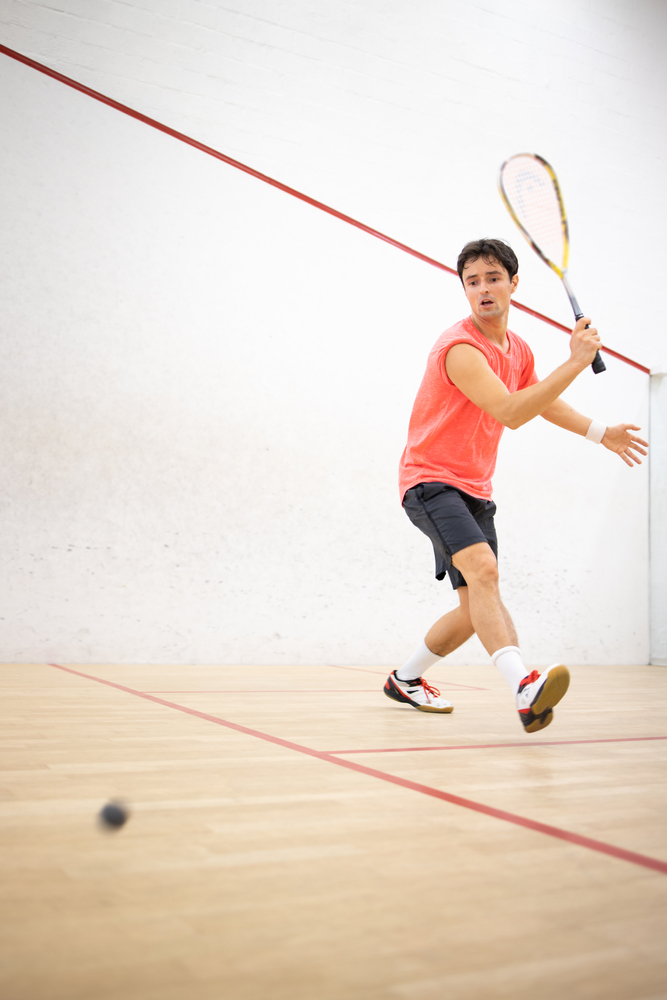
Two Player Vs. Four Player In Squash – Replayed Points
The rules of squash allow for a ‘let’ or replay of a point where players unintentionally obstruct each other or the view of the ball after playing a shot.
When this happens, the umpire or referee may call ‘let,’ and the point is replayed by the player who served on the previous point.
This is a common occurrence in the singles game but tends to happen far more in the doubles game due to the proximity of players to each other and the limited space on the court due to the number of players.
While most players will actively look to create space and allow their teammates and opponents as much space as possible, the fact that four players are crammed onto the court will mean more obstructions and let points than in the two-player game.
Doubles Vs. Singles Squash- Which Has Higher Risk Of Injury
Aside from the ‘let’ points due to obstruction, moments may be replayed if a player is struck with the ball or a racquet during play – but this depends greatly on the situation as intentionally hitting your opponent would be called a foul, and you would forfeit the point.
If one player strikes the other with the racquet and it is accidental, or the player avoids taking a swing for fear of striking the opponent, the point is called a let and replayed.
However, the onus is on the ‘non-striking’ player to give enough space and clearance to the striking player to avoid being hit. If the opponent does not make a clear effort to provide space to allow a free swing of the racquet, the opponent may lose the point.
In singles squash with two players, the incidents of racquet and ball impacts are far less than in doubles, and this is where the referees come into play far more than in singles.
The enclosed space and length of the racquets increase the risk and incidence of accidental and sometimes intentional impacts with the ball and the racquets during a game.
The risk of injury due to impact with the wall, another player, or the ball or racquet in doubles squash is far higher than in singles, and this is why to play doubles, players must have good levels of fitness and experience.
This doesn’t stop less experienced players from playing doubles; over time, they will get used to the flow of the game and learn how to create the space for their teammates and opponents, allowing the flow of the game to improve.
Doubles Squash Vs. Singles Squash – Court Management
In the two-player game, each player will stand on their respective courtside, with the receiver of the service on the adjacent side to the server.
Each player can move freely around the court to play the ball during the game, but the doubles game is a little different.
With four players on the court, each team would pick a ‘left wall’ and ‘right wall’ player, and those players would cover their designated sides. This practice takes discipline as the impulse is to go for the ball no matter where it is going to land.
In most cases, the players will alternate hitting the ball as the ball is often played from side to side, and so the ‘right wall’ player will hit shots if the ball is played to that side, while the ‘left wall’ player will play the ball on the left side of the court.
But, because the doubles game only requires a player from each team to play the ball and not alternate between players throughout the game, one player may have more shots on a point than another.
How Are ‘Right Wall and Left Wall’ Players Chosen
Usually, one player has a stronger backhand or forehand than the other. So, for example, if both players are right-handed, the player with the stronger forehand will play on the right wall side, and the player with the better backhand will play on the left side.
Where you have a left-hand/right-hand combination in a team, the left-handed player will play on the left wall using their forehand to good effect, and the right-handed player will play on the right for the same reason.
For example, where the ball is played closer to the center line of the court on the left side, right-handed players on the ‘left wall’ can use their forehand to hit it or allow their partner to use their backhand and the same would apply if the ball was played to the right side of the center line.
How Many Referees Are There In Singles And Doubles Squash
At the professional level and for both single and doubles squash matches, there are usually three referees, with the center referee making most of the call in consultation with the two side referees.
The center referee would consult with his assistants where there is an appeal for obstruction or where the ball has struck a player, and there is an appeal for a ruling, or in any other instance where an appeal by a player or team needs to be assessed and considered.
In amateur or recreational games, there may not be a referee, and players take it upon themselves to call the game as fairly as possible.
Because squash is such a fast-moving game, you need three pairs of eyes on the game, even more so when four players are on the court.
Conclusion
Two or four players can play squash, and while the rules are essentially the same, the court for doubles is bigger, and the doubles game can be played to 15 points rather than 11, if both teams agree.

